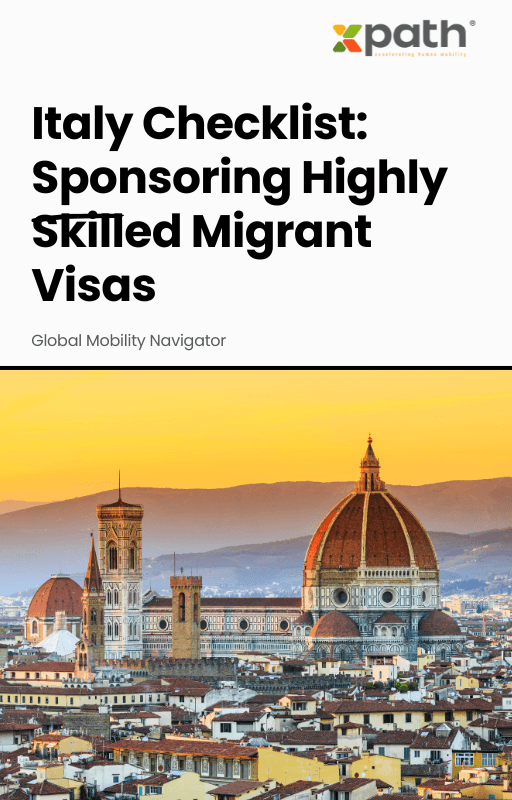Italy Checklist: Sponsoring Highly Skilled Migrant Visas
Grab a copy of a guide to international employee relocation
View E-bookConvincing leadership to invest in new mobility tools can feel a bit like trying to teach an old dog new tricks—except, in this case, the “tricks” could be game-changers for global business agility. As organizations increase their international reach and competition for talent heats up, the right global mobility solution isn’t a nice-to-have; it’s a business essential. But when every dollar gets scrutinized and “innovation fatigue” is real, how do you make your case?
The story isn’t just about moving people across borders anymore. Global mobility is now a strategic lever, impacting everything from compliance and cost control to employee experience and company reputation. According to Deloitte’s Global Mobility Trends survey, 92% of organizations see mobility as important to achieving broader business objectives, with nearly half planning to increase their investment in digital mobility tools over the next two years. The stakes are high—one misstep can result in compliance penalties, lost talent, and skyrocketing costs.
Yes, new technology means upfront costs. But what is the price tag on inefficiency, frustrated employees, and regulatory risk? Manually managing international assignments with spreadsheets and emails isn’t just time-consuming; it’s error-prone. Mercer reports that organizations relying on outdated processes spend, on average, 30% more on administrative overhead, and risk non-compliance penalties that can run into six-figure territory per infraction. Consider this: a single payroll mishap or visa mistake can trigger audits, back-taxes, or even assignment cancellations—not to mention reputational fallout in global markets.
If leadership wants numbers, new mobility tools deliver. For instance, automated compliance checks inherent in modern platforms—like those found on xpath.global—can reduce assignment-related errors by 40%, based on internal benchmarking by major multinational clients. Workflow automation cuts processing times in half, while transparent cost projections help contain relocation budgets and deliver up to 25% in savings per employee move, according to PwC research. More importantly, these platforms offer analytics dashboards that can slice and dice assignment metrics, talent ROI, and budget tracking in real time, empowering leadership to make faster, smarter decisions.
Let’s put it in real-world terms. A leading European tech company, struggling with slow assignment approvals and compliance headaches, implemented a cloud-based global mobility solution. Within a year, the company reported:
What turned the tide? Leadership saw hard ROI—less time, less money, and way less stress. And they credited robust collaboration with providers like xpath.global for demystifying the process and setting clear criteria for measurement.
Leaders, by nature, are wary of “shiny new thing” syndrome. To persuade them, tie your justification to business-critical outcomes:
Risk Mitigation: Explain that automated compliance tools neutralize the chance of expensive mistakes.
Employee Experience: Emphasize higher retention rates and employer brand impact, critical when resignations cost up to twice an employee’s salary.
Strategic Decision-Making: Highlight how real-time analytics power global talent deployment, not just “keep the lights on.”
Scalability: Make the case that digital platforms scale with business growth, eliminating the need for staff bolstering or system overhauls every few years.
Acknowledge that the cost isn’t just about software licenses or consulting fees—it’s an investment in the company’s future agility and resilience.
Evaluation is everything. A one-size-fits-all tool seldom meets diverse needs. That’s why platforms like xpath.global stand out—offering a robust ecosystem that covers immigration, tax, compliance, and relocation support, all under one roof. When pitching to leadership, showcase how an integrated tool streamlines workflows, centralizes data, and poises the business for global expansion. And don’t neglect the value of a provider with global reach and local expertise—rest easy knowing someone has your regulatory back wherever business beckons.
How do I quantify the ROI of a new mobility tool?
Break down direct savings from reduced admin, lower risk of fines, and smoother assignment timelines. Layer in improved employee retention, higher productivity, and potential revenue from faster global project delivery.
What features should leadership care about most?
Focus on automation, compliance management, cost forecasting, and analytics. Leaders appreciate clarity and control, so dashboards, forecasting, and audit trails should top the list.
Can smaller companies justify these tools?
Absolutely. Even modest-sized firms face complex compliance obligations and fierce competition for talent. Scalable platforms mean you only pay for what you need, and the upside in saved time and risk reduction pays off quickly.
Is change management a big hurdle?
It can be, but leading solutions offer accessible user interfaces, onboarding support, and training that soften the learning curve for HR and relocating employees alike.
Ready to transform your mobility program? Explore xpath.global’s solutions.

Italy Checklist: Sponsoring Highly Skilled Migrant Visas
Grab a copy of a guide to international employee relocation
View E-book